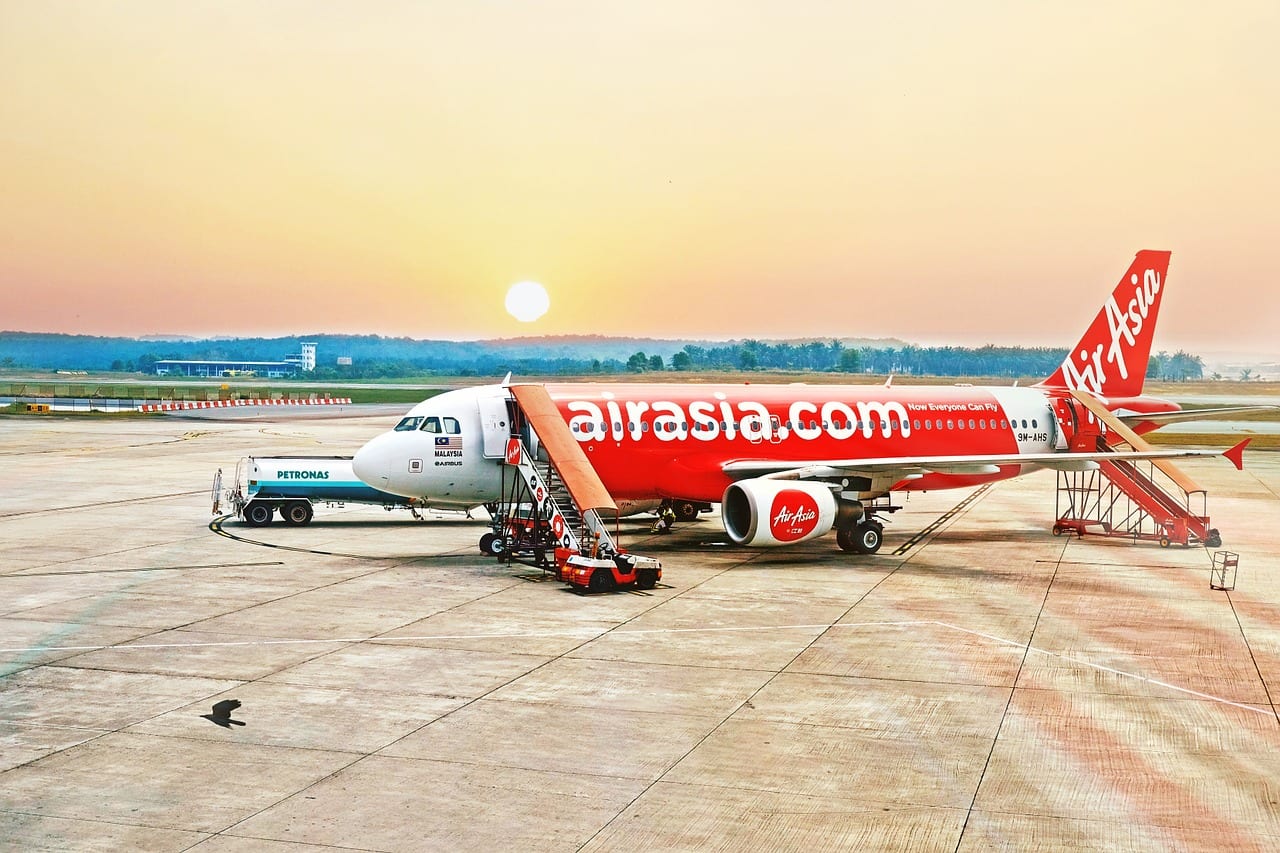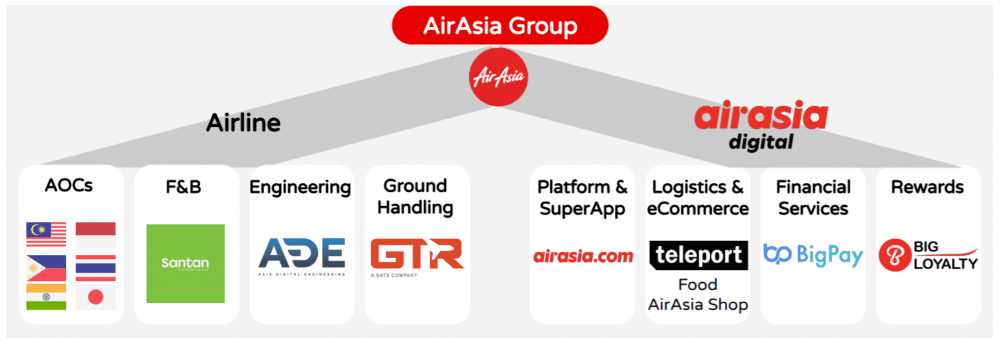
The International Air Transport Association described 2020 as the ‘worst year in the history of aviation’. Airlines are estimated to lose US$84.3 billion altogether this year as international borders close and countries lock down to curb the spread of COVID-19. In Malaysia, AirAsia Group was also not spared and hit the news headlines for not so good reasons.
Recently, it ceased its AirAsia Japan operations and its auditor cast doubt on the company’s ability to continue as a going concern. AirAsia is a famous household icon in Malaysia and many of us have flown AirAsia before. It is a low-cost carrier that offers cost-conscious consumers in this region an alternative flight option. However, as AirAsia burns cash at a monthly rate of RM527 million, can it pull through the pandemic?
Here are eight things I learned from the 2020 AirAsia AGM.
1. Revenue improved 11.5% year-on-year to RM11.9 billion in FY2019 because of improved results from its Philippine and Indonesian operations. The company has also set up a domestic presence and a hub in Lombok. It slipped into the red in terms of net profit because of losses from its India and digital businesses. AirAsia India has yet to receive its licence to fly internationally and is still waiting for the Indian government’s relevant confirmation.
2. The company undertook organisational restructuring to separate its business into two pillars, namely Airline and AirAsia digital. It has recently revamped and relaunched airasia.com to expand and consolidate its offerings on an app/website. airasia.com is branded as a super app that is anchored on travel and includes even non-AirAsia flights, retail, food, and grocery offerings. For example, AirAsia’s wholly-owned venture Teleport focuses on last-mile delivery of products and services that are featured on airasia.com.
AirAsia launched BigPay in 2018 but is still bleeding — it lost around RM52.3 million in the first half of 2020 — according to CEO Tony Fernandes. He attributed the losses to the difference in interchange fees it has to pay financial telecom network providers like Mastercard and what they are able to collect.
Transaction value on BigPay increased 15% in Q2 2020 despite travel restrictions while remittance volume ballooned 469% in 1H 2020. It has also secured key remittance licences for Malaysia and Singapore. In 2019, AirAsia Digital contributed to about 6% of the company’s revenue. This entire pillar is expected to account for about half of the company’s revenue within five years.

3. Fernandes expects international borders to remain close until the first quarter of 2021. AirAsia has to rely on domestic operations — countries where AirAsia operates have resumed domestic flights to a certain extent. AirAsia’s load factor has since averaged around 60% and inches towards 70% during weekends and on public holidays. It has even launched cargo-only flights to mitigate the impact of COVID-19 on the company. It tightened its cash flow and is in the midst of securing bank financing in Malaysia and other markets.
Nikkei Asia reported that AirAsia has secured a RM1 billion loan that is backed by the Malaysian government under the Danajamin PRIHATIN Guarantee Scheme. However, the Ministry of Finance Malaysia subsequently denied approving any form of government guarantee or financing to any airline.
4. AirAsia embarked on a number of cost reduction exercises to reduce half of the cash outflows in 2020. These includepay cuts to the board of directors’s salaries and layoffs. A shareholder questioned the adequacy of support provided to retrenched employees as an ex-pilot committed suicide after he was laid off by the company. The atmosphere turned grim once this question was read out by the emcee. Fernandes said it would not be appropriate for anyone to comment on this incident. The airline had not made any employees redundant in the past but did so in 2020 when almost all of its aircrafts were grounded. There might be more layoffs going forward.
AirAsia recently confirmed laying off more than 2,000 employees, which represented 10% of the total headcount. He added that his employees were reskilled and upskilled as well as provided with job opportunities so that they could land themselves a job once they left AirAsia.
When flights were cancelled because of COVID-19, AirAsia customers were given the options of moving the flight to a later date or receiving account credits for future use on airasia.com. Refunds were not offered in order to retain cash.
5. Fernandes mentioned that there is no plan for the airline to ‘close shop, go privatise, or delist’ or merge with other airlines. He jokingly responded to a shareholder’s question that his target price for AirAsia is a lot higher than the share price now and that of CIMB analysts. He believes the company will emerge stronger once flying returns given the efforts they have made in the past two years. It was one of the very few moments he actually smiled throughout the AGM. He said, ‘AirAsia has been my life, and I put my life and soul into this airline, I would do whatever is needed to keep the company afloat.’
6. AirAsia owns 245 aircrafts and more than 230 of them are leased. In 2020, the airline welcomed its very first A321neo aircraft that boosts seat capacity and fuel savings. As a result of the pandemic, AirAsia is not expecting any new aircraft in 2020. Fernandes still believes it was the right decision to sell and lease back aircraft. AirAsia has benefited from the decision in this current condition or the potential impairment risk would be greater.
The airline is given flexibility to scale back growth and renegotiate any necessary arrangements with its lessors. AirAsia received support from its lessors for deferrals of payment, resulting in 99% reduction in net cash used for financing activities in Q2 2020.
7. Fernandes clarified to shareholders that AirAsia has never borrowed money to be in the oil futures market. Fuel hedging is a means to reduce fuel price volatility and the airline’s policy is to hedge based on forward sales. AirAsia hedged 68% of its budgeted fuel requirement for 2020 at an average Brent price of US$61/bbl against the average market price at US43/bbl. Up to 70% of fuel hedging contracts have been restructured and/or deferred in settlement.
8. Minority Shareholder Watch Group pointed out that a director was absent from all four safety review board meetings in 2019. The director subsequently resigned from the board in August 2020 because of her other personal commitments. It urged AirAsia to revisit and enhance the company’s board procedures and processes.
Liked our analysis of this AGM? Click here to view a complete list of AGMs we’ve attended »



